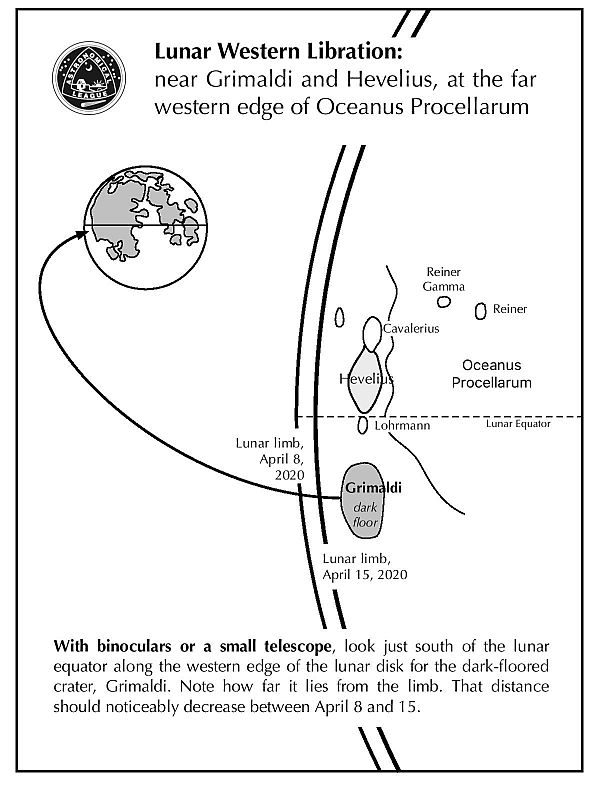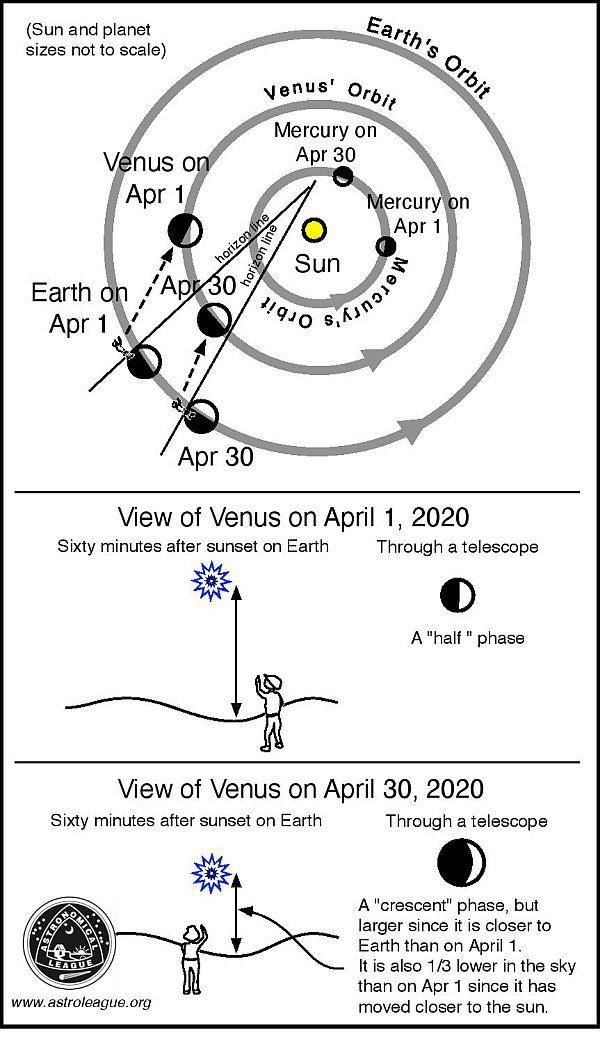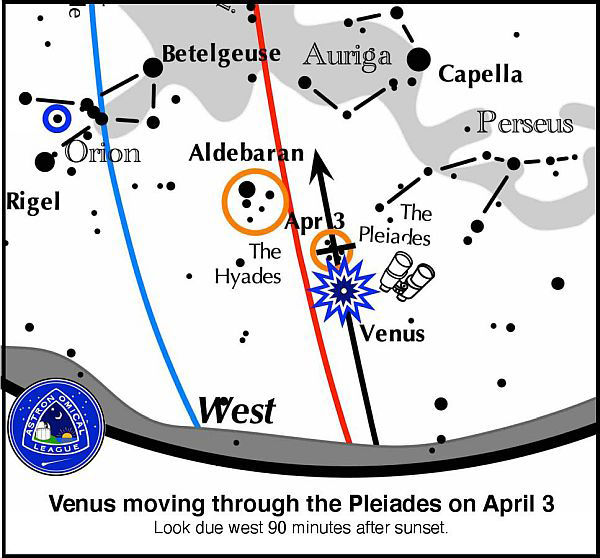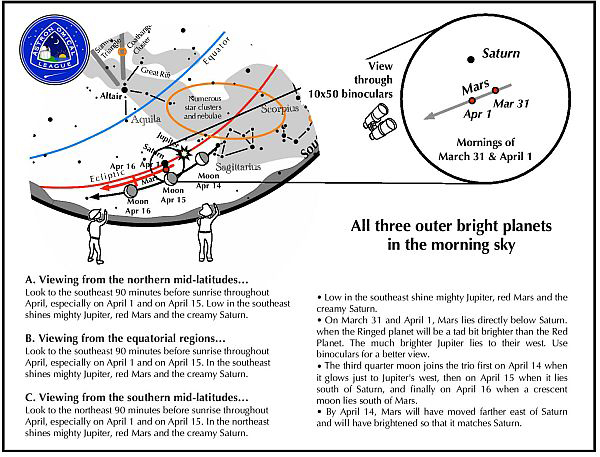Discovering the Solar System (Observing Challenge)
Projects for the Keen–Eyed and Camera–Toting Observer
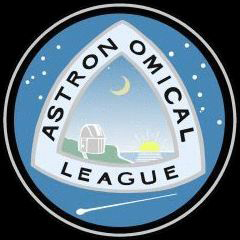
During Global Astronomy Month (GAM), AWB shares a series of observing challenges, developed by John Goss and The Astronomical League for astronomy novices to seasoned pro's. Some of these challenges can be completed in a night while others encourage participation for the full month.
Share your photos from this challenge with us and the world on Facebook, or Tweet using #GAM2020 hashtag and follow (@awb_org.)
The “Big Moon” Illusion
a naked eye and camera activity
Casual sky watchers since the time of the ancient Greeks have seen the rising moon as appearing much larger than after it has climbed higher in the sky. The moon is often portrayed in film and television as being very large and bright when it is near the horizon. All these flies in the face of the fact that the actual apparent size of the moon, whether it is rising, or it is at its highest point in the sky is quite small. Fully extend your arm and outstretch your hand. The moon’s apparent diameter is only about 1/4 the width of your index finger.
The common explanation of the “Big Moon” illusion is that when the moon’s apparent size is compared to familiar landscape objects, such as distant houses and trees, our mind interprets the moon as being quite large. Then, when it moves higher in the sky, there are no nearby comparison objects. The moon’s apparent size then appears to shrink, and it seems to lie much farther away. While sounding plausible, this reasoning does not explain why the same effect occurs at the beach when the moon is seen hovering just above a flat, featureless ocean horizon, or in the desert when the moon is cast against sweeping sand formations. Studies have sought a deeper psychological explanation.
See the big moon illusion for yourself on the evening of April 7th, 8th or 9th. From a location that has a low horizon line, look to the east at sunset for the rising moon, or, on the following morning, to the west at sunrise.
- Isolate the moon by viewing it through a narrow tube, such as a drinking straw. Note its size compared to the tube’s field of view. Wait two hours or more and repeat the observation. (If it is a morning observation, first look a couple of hours before sunrise.)
- Use a digital camera at full optical zoom and take an image of the rising moon. Be sure the camera is properly focused and that the image is not overexposed. Again, wait a couple of hours, then take another image. Download both images on a computer and view them at the same image scale.
Are the moon sizes the same?
Compare the Size Difference Between Moon at Apogee and Perigee
a camera activity
A direct comparison between the apparent sizes of the moon when it is near perigee (the moon’s closest point to Earth) and when it reaches apogee (the moon’s farthest point) can be made. Perigee occurs about April 7 when the moon is in a waxing gibbous phase, almost full. Simply take a digital photo of the moon on either the 7th or 8th, shortly after sunset. Take another image in the morning of apogee, April 20, or the morning before or after. (It will be in a thin crescent phase.) Use the camera’s full optical zoom feature, and make sure the lens is properly focused. (Try using a manual focus set on infinity.) Be careful not to overexpose the images.
Directly compare the apogee and perigee moon sizes on a computer using the same image scale. The April 7 image will be found to be about 10% larger than the April 20 image.
Discover Lunar Libration, Seeing the Far Side of the Moon
a binocular and camera activity
One interesting consequence of the moon’s elliptical orbit is the phenomenon known as libration. The moon presents the same hemisphere towards Earth as it orbits our planet. Therefore, we always see its same side; we never see its far side. Strangely though, during each month, we can observe about 59% of the lunar surface.
The moon traces an elliptical path around Earth. One of the features of a body moving in an elliptical orbit is that, when it is nearer to the parent body, it moves faster, and when it is farther, it moves slower. Therefore, the moon moves slowest at apogee and fastest at perigee. All the while, the moon rotates at a constant rate, completing one full rotation every lunar orbit. Because of these two factors – the changing speed of the moon in its orbital path and its constant rotational rate — plus the changing curvature of its elliptical path, observers on Earth are able, at times, to see slightly around the western limb of the moon, and, at other times, to see slightly around the eastern limb. This is an east-west libration.
There is also a north-south component, because, at times, the moon is either slightly above or below the ecliptic, permitting observers on Earth to see slightly over the moon’s south or north polar regions, respectively.
Activity for binoculars or small telescope: Observe the crater Grimaldi near the moon’s western edge. It has a dark floor, making for easy identification. Photograph it using a digital camera at full optical zoom. Be sure to focus the camera and be careful not to overexpose the image. Do this on April 8 and do so again on April 14 or 15. Download the images on a computer displaying the same image scale. Closely examine the amount of lunar surface between the western edge to Grimaldi. The April 15 image should show much less distance than the April 8 image.
The Moon plows through the Hyades
a naked eye and camera activity
From April 25, 21:00 UTC to April 26, 3:00 UTC, the crescent moon moves in front of the northern portion of the Hyades star cluster. This event is best seen in northeastern US and southwestern Canada.
Observe the event through binoculars and capture it with a digital camera. Note the time for each photo. As the minutes pass, the dark edge of the moon slowly moves in front of different stars, blocking them from view. Other stars pop out the moons brightly lit crescent side. This demonstrates that, even though the moon appears to move westward in our sky, it also travels eastward in its orbit around our planet. It moves about one of its diameters every hour.
April is a Month for Brilliant Venus
a naked eye and binocular activity
- At the beginning of April, Venus lies near or within the Pleiades star cluster. Use binoculars for a clearer view of brilliant Venus nearly overpowering the subtler glow of the Pleiades. (Evening twilight will interfere in the Southern Hemisphere.)
- For the rest of the month, the planet moves noticeably away from the Pleiades and on April 21 it forms a right triangle with the Pleiades and the bright star Aldebaran. Ninety minutes after sunset each evening in April, plot the relatives position Venus has with the Pleiades and Aldebaran. On April 25, 26, and 27, the crescent moon joins the scene sliding past Venus, the Pleiades and Aldebaran.
- No doubt, Venus is bright. It is so bright, in fact, that it can cast a shadow. 90 minutes after sunset, stand next to a light-colored wall, placing yourself between the wall and Venus, you will notice a dim, but sharp shadow of yourself on the wall.
Sunrise and Sunset Locations
a naked eye activity
It surprises many people that the sun doesn’t rise or set at the same location on the eastern and western horizons throughout the year. Earth’s rotational axis is tilted resulting in the sun rising the farthest south on Dec. 21 and the farthest north six months later June 21.
On one of the first days of April, note where the sun peeks above the eastern horizon and where it sets along the western horizon. Repeat the observations from the same location on a day at the end of the month. (Do not look at the sun! When it first begins to rise, stopping looking. After its last rays disappear below the western horizon, make your evening observation.)
Three Bright Outer Planets Appear in the Morning Sky
a naked eye and binocular activity
- Viewing from the northern mid-latitudes…
Look to the southeast 90 minutes before sunrise throughout April, especially on April 1 and on April 15. Low in the southeast shines mighty Jupiter, red Mars and the creamy Saturn. -
Viewing from the equatorial regions…
Look to the southeast 90 minutes before sunrise throughout April, especially on April 1 and on April 15. In the southeast shines mighty Jupiter, red Mars and the creamy Saturn. -
Viewing from the southern mid-latitudes…
Look to the northeast 90 minutes before sunrise throughout April, especially on April 1 and on April 15. In the northeast shines mighty Jupiter, red Mars and the creamy Saturn.
- On March 31 and April 1, reddish Mars lies next to Saturn when the Ringed planet will be a tad bit brighter than the Red Planet. The much brighter Jupiter lies to their west. Use binoculars for a better view.
- The thin crescent moon joins the trio, first on April 14 when it glows just to Jupiter's west, then on April 15 when it lies directly south of Saturn, and finally on April 16 when an even thinner moon lies south of Mars.
-
By April 14, Mars will have moved farther east of Saturn and will have brightened so that it matches Saturn.






